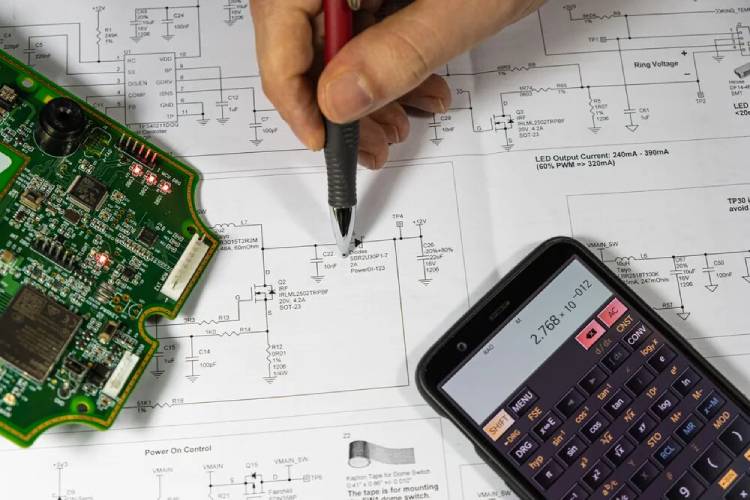
As embedded and miniaturized hardware solutions continue to advance, an increasing number of developers are opting for standardized open-source or license-free software solutions. Mouser Electronics and Adam Taylor, founder and lead consultant of Adiuvo Engineering & Training Ltd., discuss how open-source solutions impact the electronics sector and explore what the future could hold.
"Open source" can have different interpretations depending on your background. How do you define it within the electronics industry and from an electronics engineer’s point of view? What do you see as the pros and cons of open source?
It is an interesting topic to define, especially when separated from the software side. Open source is undeniably advantageous, as it enables shared knowledge and collaboration in a practical manner. It also enables the ability to explore existing designs and utilize them as a foundation or for inspiration.
However, one of the biggest issues with open source, especially in the world of electronics, is the surrounding confusion. There are varying degrees of permissions at the licensing level, which contributes to the complexity and misunderstandings; some licensed solutions provide complete freedom, whereas licenses like copyleft can be quite restrictive for certain applications. For smaller companies, this can be a major barrier as they may not have the resources to investigate where they stand legally in terms of usage.
Engineers often believe that every project is entirely unique. But in reality, even the most cutting-edge designs will incorporate ideas or components from other existing projects, and it is here where open source can foster collaboration and cooperation. Embracing open source provides engineers with the opportunity to leverage the knowledge of others, enhancing the potential benefits for their own projects.
How can an open-source solution impact product development?
Open-source initiatives allow engineers to build off existing ideas, whether these are development tools or electronic devices. With open source, engineers usually have a greater support network and larger working communities that can support when a problem or application arises. Essentially, open source significantly streamlines and enhances project development.
Open-source applications can also have a significant impact in terms of quality and compliance. In a closed-source environment, new designs have to undergo extensive internal checks. However, in an open-source environment, reputable designs have already passed through the scrutiny of several engineers. While this may not be sufficient for full validation in highly stringent applications, it can help to streamline the process.
From a business perspective, creating a strong product traditionally involves unique selling points and intellectual property. Are open-source solutions truly viable for market-ready products?
This is the major concern that can turn engineers away from open-source solutions. From a business standpoint, there is a concern about seeing no return on investment. Individuals are often unwilling to invest time and resources in open-source projects without seeing any benefits.
Looking at Adiuvo, for example, there is a real benefit in using open source to add value to a product or solution. With one of the new field-programmable gate arrays (FPGA) development boards, the schematic and layout will be open source to enhance the value of the product. The aim of incorporating open source as part of the business model is to appeal to engineers by making their jobs easier.
Open source needs to be a middle ground. As a business, you can make elements open-source and invite engineers in, but you have to be careful. There is not a one-size-fits-all solution for making open source a part of your business model.
What are examples you recognize as successful open-source electronics solutions, and where are these impacting the market? Are we looking at development solutions or final products?
Most developments in the FPGA market are focused on software and development tools, rather than providing a ready-to-use hardware solution or components that engineers can drop straight into their application.
This trend is similar to the impact that open-source solutions like compilers have had on the software industry. It is expected that this shift will also affect the development of hardware such as FPGAs, system-on-chips (SoCs), microcontroller units (MCUs), and more, where engineers add value from the application of the hardware, rather than the hardware itself.
How do broader industry-backed open-source solutions like Zephyr and Matter fit in, and what impact do they have on the electronics industry?
Evaluating embedded Linux as an example, this is an area where open source is thriving. For years, engineers have been doing very similar things in terms of the application and its requirements, using the same source or kernel but approaching it in a completely different way.
These varying approaches create a few issues, but one of the main ones is the portability of software engineers. Different approaches make it challenging for software personnel to switch projects or companies. This results in unnecessary training and redundant work by highly skilled individuals, as well as harming interoperability.
The Linux Foundation Yocto Project is a perfect example of widespread collaboration. It enables individuals to build embedded Linux solutions using a standardized approach, resulting in decreased deployment time and expenses while also fostering best practices. Other industry-supported solutions like Zephyr and Matter have been influenced by the success of Yocto. Its results showed that producing industry-focused contributions can positively impact businesses, end user’s projects, and the entire engineering community.
Has the rise of IoT and IIoT smart devices, with a focus on interoperability, impacted industry-supported open-source solutions?
Yes, but this is a component of a bigger theme, which is the search for standardization. While engineers like to start from scratch, this is not always the best way to go about development for the end user—especially in terms of smart homes or connected services.
Evaluating Matter as an example, the reason it is successful is more tied to its ability to get companies to agree on a standard, rather than it necessarily being open source. A closed-source free standard could easily have the same impact, so it is the standardization with low cost of entry that is the critical factor, rather than if it is open or closed source.
What are your thoughts on hybrid approaches that involve a fusion of open-source and closed-source solutions, and how do these approaches benefit both suppliers and developers?
At the heart of being an engineer is the ability to identify or create the perfect solution for a particular use, delivering it on time, to a high quality, and within budget. This hybrid approach truly embodies this principle and is increasing in popularity across the industry. As long as licensing rules are adhered to, it is a sensible way to conduct business.
When delving into many open-source hardware solutions, they typically involve a hybrid approach. Looking back at the Linux example, many Yocto-based solutions are running on closed-source hardware. Similarly, many larger open-source hardware solutions will usually have a closed-source proprietary connector or component in there.
Finally, how do you predict the future market share of the electronics industry in terms of proprietary versus open source?
There will likely be a rise in open-source solutions as there are a number of driving factors, including the proliferation of development tools, the closer relationship between software and electronics, and the complexities of modern applications lending themselves to the sharing of information.
Twenty years ago, developing an FPGA solution required a significant financial commitment and a steep learning curve, limiting entry to big companies. Free editors, simulators, and synthesis tools are now available for download, effectively eliminating the entry barrier. Many larger hardware manufacturers are now happy to provide free resources to better support their products, causing a significant shift.
In the coming years, it is highly probable that the electronics industry will be greatly influenced by open-source solutions encompassing software, hardware, and AI.
Original Source: Mouser
 About Author: Adam Taylor is a professor of embedded systems, engineering leader, and world-recognized expert in FPGA/System on Chip and Electronic Design.
About Author: Adam Taylor is a professor of embedded systems, engineering leader, and world-recognized expert in FPGA/System on Chip and Electronic Design.





